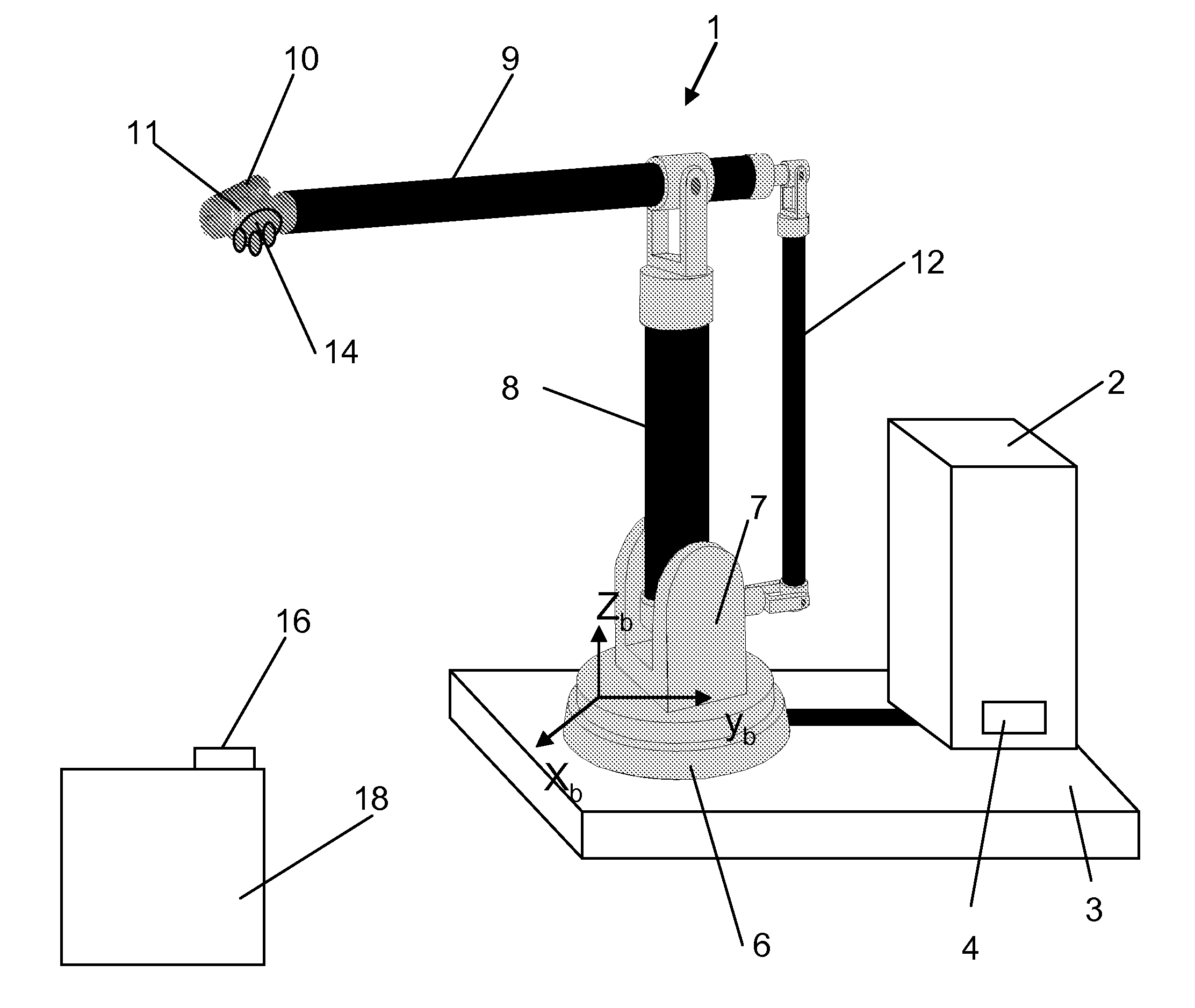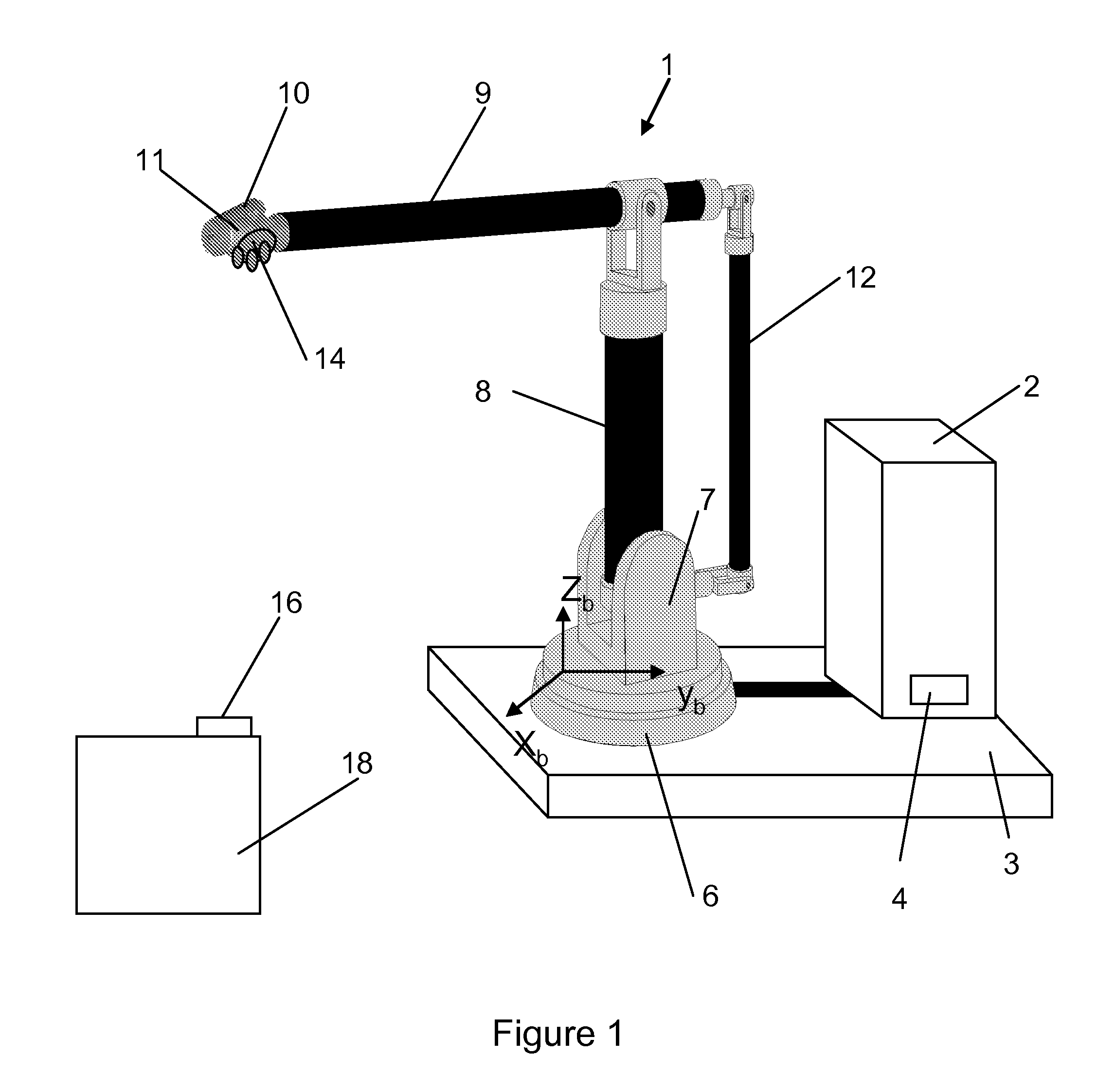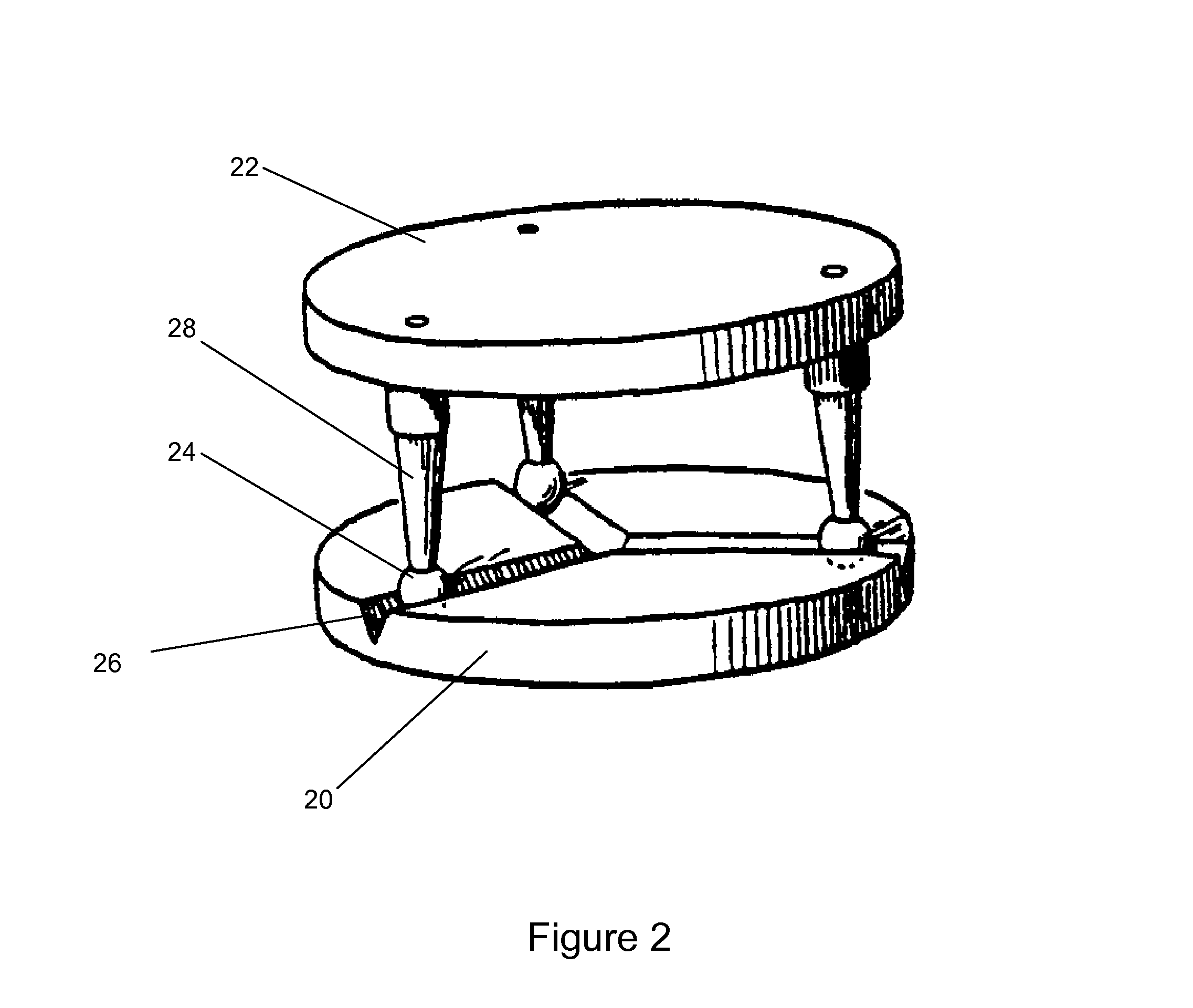Calibration of a base coordinate system for an industrial robot
- Summary
- Abstract
- Description
- Claims
- Application Information
AI Technical Summary
Benefits of technology
Problems solved by technology
Method used
Image
Examples
Embodiment Construction
[0057]FIG. 1 exemplifies a portable robot, where a lightweight robot 1 including a robot controller 2 is mounted on a movable platform 3. The portable robot is located in a robot cell which defines a work area for the robot. The robot controller 2 is also mounted on the platform but there are cases when each robot cell may have its own controller and then only the robot will be on the platform. The robot 1 is connected to the controller 2 by a cable and at docking a contact 4 is used to electrically connect the robot, tools, and the controller to the cell. The robot comprises a stationary base part 6, which supports a stand 7 that is rotatable about a first axis. The stand 7 supports a lower arm 8 that is rotatable about a second axis. The lower arm 8 supports an upper arm 9, which is rotatable about a third axis. The upper arm 9 supports a wrist 10 that is rotatable about a fourth, a fifth and a sixth axis. The wrist 10 supports a wrist interface 11 in the following named a wrist f...
PUM
 Login to View More
Login to View More Abstract
Description
Claims
Application Information
 Login to View More
Login to View More - R&D
- Intellectual Property
- Life Sciences
- Materials
- Tech Scout
- Unparalleled Data Quality
- Higher Quality Content
- 60% Fewer Hallucinations
Browse by: Latest US Patents, China's latest patents, Technical Efficacy Thesaurus, Application Domain, Technology Topic, Popular Technical Reports.
© 2025 PatSnap. All rights reserved.Legal|Privacy policy|Modern Slavery Act Transparency Statement|Sitemap|About US| Contact US: help@patsnap.com



